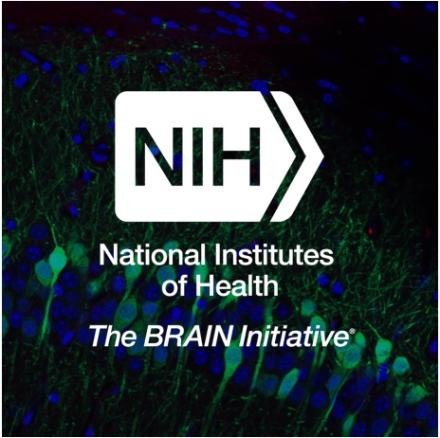With today’s powerful imaging tools, neuroscientists can monitor the firing and function of many distinct neurons in our brains, even while we move freely about. They also possess another set of tools to capture remarkable, high-resolution images of the brain’s many thousands of individual neurons, tracing the form of each intricate branch of their tree-like structures.
News

BRAIN News Spotlight
Researchers Fully Map Neural Connections of the Fruit Fly Brain
NIH-supported milestone will advance understanding of brain processes in larger animals.
View Spotlight ArticleEach year, the initiative celebrates some standout and especially creative examples of such advances in the “Show Us Your BRAINs! Photo & Video Contest. During most of August, I’ll share some of the most eye-catching developments in our blog series, The Amazing Brain.
Researchers supported by the National Institutes of Health Brain Research Through Advancing Innovative Neurotechnologies® (BRAIN) Initiative have developed a way to genetically insert a type of light receptor into neurons. The new technique enables the researchers to suppress the neuron’s activity using pulses of light. While researchers have previously used light to control the activation of neurons, the ability to inhibit the activity of neurons represents a powerful tool that can be used to better understand the workings of neural circuits in the brain.
In the diagnosis of disease, doctors often need to take tissue samples and process them for examination under a microscope. Millions of such biopsies are performed in the U.S. every year. But these pose many challenges. Biopsies may damage healthy tissue. Conventional histology techniques used to examine the samples can require extensive processing and take days.
NIH-funded study identifies brain cells that form boundaries between discrete events.
Treatment-resistant depression (TRD) is diagnosed after an individual has tried several types of treatment for depression and their symptoms haven’t improved. The effectiveness of deep brain stimulation (DBS) as a treatment for disorders such as Parkinson’s disease has led researchers to investigate whether it could also work for psychiatric disorders such as TRD. However, depression varies significantly among individuals, and studies on DBS for TRD have also produced variable results. This points to a need to personalize DBS treatment for individuals with depression.
- Human Neuroscience
- Neural Recording & Modulation
Study sheds light on potential for long-term, at-home use of deep brain stimulation as a treatment for neuropsychiatric disorders
By Joshua Gordon, M.D., Ph.D., and Walter Koroshetz, M.D., director of the National Institute of Neurological Disorders and Stroke
Atlas and cell census represent the initial products of the BRAIN Initiative Cell Census Network
In the News
The BRAIN Initiative Alliance (BIA) aims to spread the word about BRAIN-funded scientific advancements. Visit the BIA website for up-to-date news coverage about the impact of BRAIN Initiative research.
The BRAIN Blog
The BRAIN Blog covers updates and announcements on BRAIN Initiative research, events, and news. Hear from BRAIN Initiative trainees, learn about new scientific advancements, find out about recent funding opportunities, and more.
